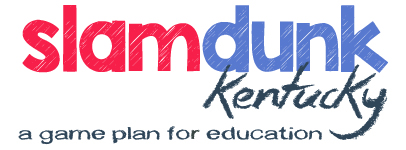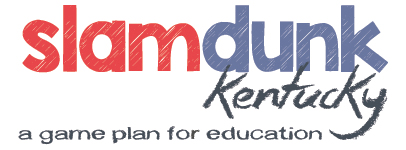By: Sheri A. Rhodes, 5th Grade Teacher at Portland Elementary School (JCPS)
The year 2011 – 2012 was a pivotal year reflection and growth for me as an educator. I was in my first year as a JCPS teacher trying to meet the needs of twenty-six 2nd and 3rd graders with a vast array of academic, social and emotional needs. Jada was a 3rd grader reading at a kindergarten level while Lucas, a 2nd grader, was performing math at a 6th grade level, reading at a 7th grade level, yet only writing two to three words per page amid his comedic acts intended to disrupt the entire class. I was exhausted, frustrated, and felt like I had not been prepared to meet the unique needs of so many students on so many different levels. More noticeably, I felt as if I was failing the Lucas’ in my room. Our school tiered students in the Response to Intervention (RTI) process which placed lower academically performing students in the spotlight and targeted them for intensive interventions while those at or above grade level were left to fend for themselves utilizing a computer program called Study Island. I focused on the struggling students while Lucas was on a computer for 30 minutes each day – completely unchallenged and disengaged.
This revelation sent me on a quest to learn more about gifted and talented students and how teachers meet their needs. I enrolled in the University of Louisville’s Teacher Leadership program and focused on an endorsement in the area of Gifted and Talented. My first observation was that there was a lack of teachers in gifted and talented programming – I was the one and only student in the program. While the independent study provided me with one on one instruction, I lacked other teachers’ perspectives and resources that are critical components to personal growth.
Throughout my coursework, I read numerous articles and books on differentiated instruction and best practices in gifted education. I had a revelation when I read Carol Ann Tomilson’s statement, “Differentiation doesn’t suggest that a teacher can be all things to all individuals all the time.” Whew! What a relief! I didn’t have to stay at work late every night creating 26 different lesson plans all I had to do was shift my mindset from knowledge giver to organizer of learning opportunities.
I started by thinking about how I might use what is readily available to help me get started. As a new teacher, I had already failed at trying to do too much too fast and I didn’t want to make that mistake again. I combined a task for one of my gifted and talented Rank 1 Masters courses and initiatives my school was implementing in regards to PLC’s and interventions and BAM! Action Research – Utilizing Response to Intervention as a Tool to Meet Gifted and Talented. In essence, through weekly standards-based check in’s, students were ability grouped and intervention/ enrichment activities were prepared based on individual student needs.

I have come a long way in differentiated instruction for my students. The teacher world is full of buzz words and they often spark a mass rolling of eyes and comments such as this, too, shall pass, but one thing that will not pass is the importance of meeting the needs of all students – including our advanced learners. Here are a few ways I meet the needs of all students and challenge my advanced and gifted students within in a mixed ability classroom:
Passion Projects: Passion Projects are opportunities for students to deepen their understanding of a topic of interest and then share that information in creative ways. They provide students choice and a voice in the learning process. Teachers guide students through their research process and empower them to see themselves as experts on their topic.
Project Based Learning (PBL): A staple of gifted education, PBL is now making its way into classrooms everywhere – YAY! All students in a mixed ability classroom can benefit from PBL without a teacher creating numerous different lessons. Students seek out and identify real world problems while deepening their understanding of cause and effect relationships. Teachers may also provide students with guiding questions to fit specific standards. For example, what better way to learn about the American Revolution and our government by investigating the question: How did the American Revolution shape the way our government is set up today?
Flipgrid: Engage and motivate your students by providing them an opportunity to share their voice on given topics. Students practice speaking and listening skills as they create and watch videos then provide feedback to their peers. Go a step further and connect with teachers across the state so that students can hear perspectives across the state (or even across state lines).
Hyperdocs: I am new to the Hyperdoc community and have been hooked ever since. Hyperdocs are teacher created and shared – for free! Simply copy the document to your Google Drive and modify as you see fit for your students, making sure to give credit where credit is due. There is a phenomenal Hyperdoc crew on Facebook and Twitter.
Meeting the needs of all students, much less gifted students in a mixed ability classroom is definitely like trying to piece together a puzzle. I have found that building a strong network of peers who share my passion for working in high needs schools, identifying at risk students for advanced and gifted programming, and challenging all students through differentiation has been a consistent motivator to continue my growth as an educator. I refuse to accept that because Lucas is above grade level that he can’t continue to be challenged in my classroom because I am too stressed trying to get all students on grade level.


